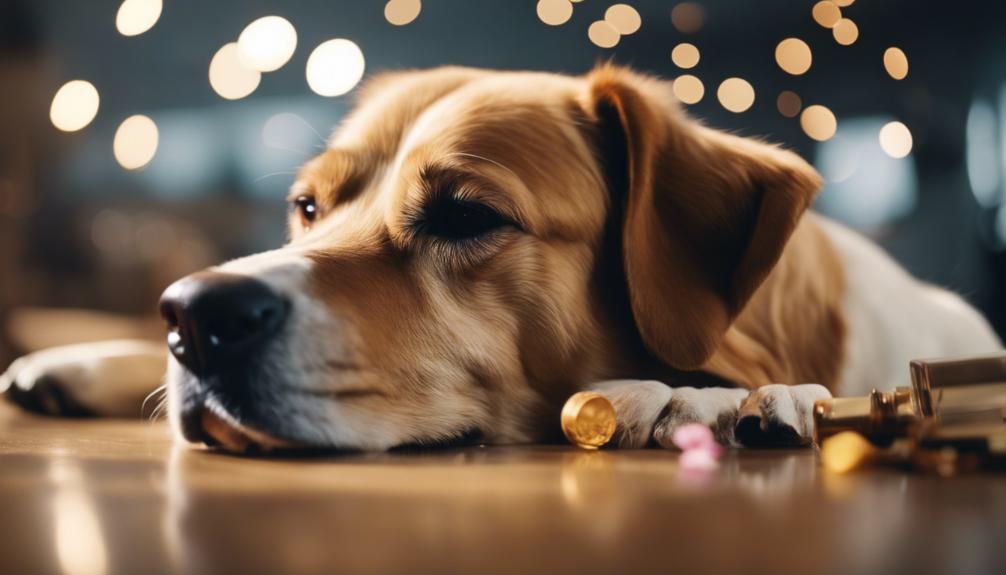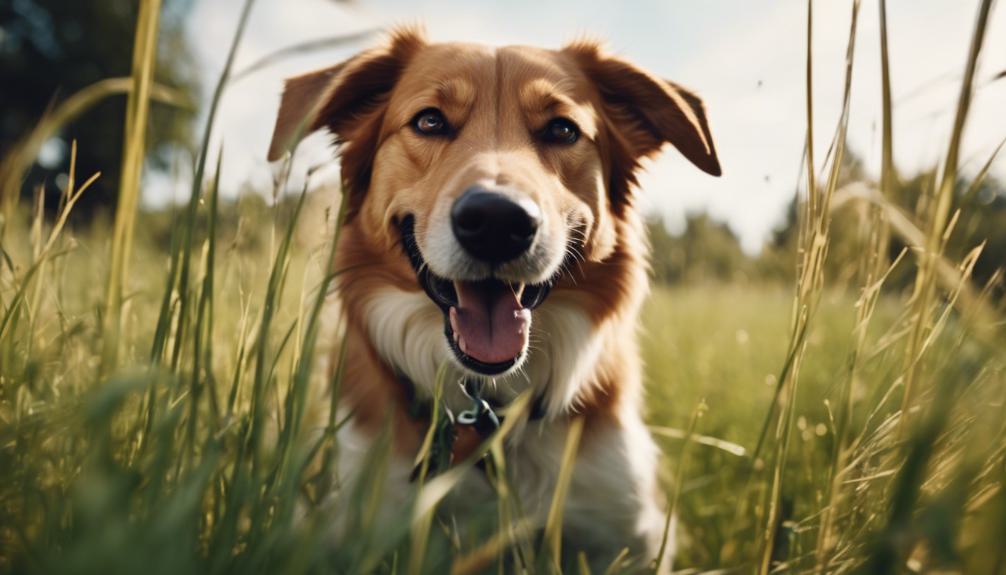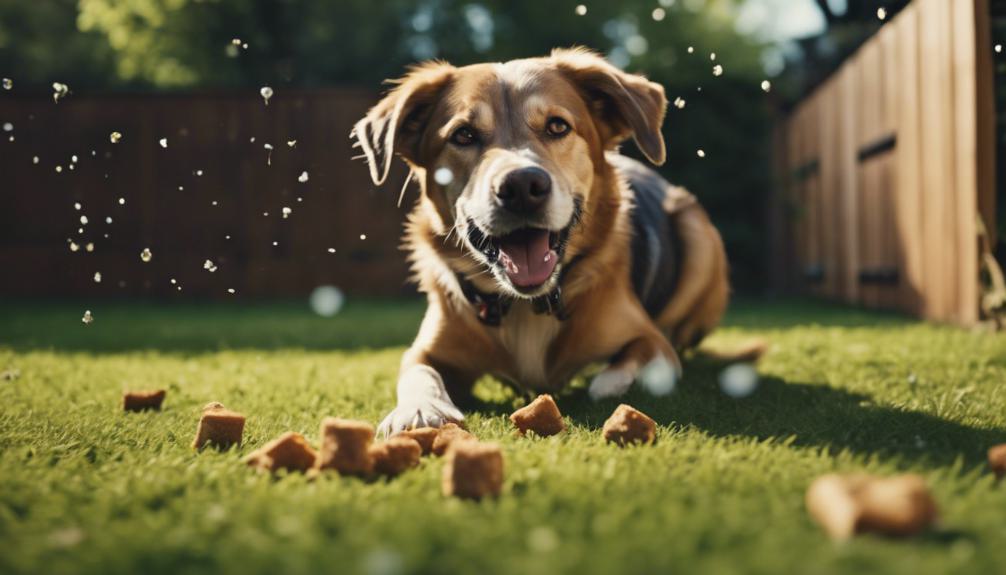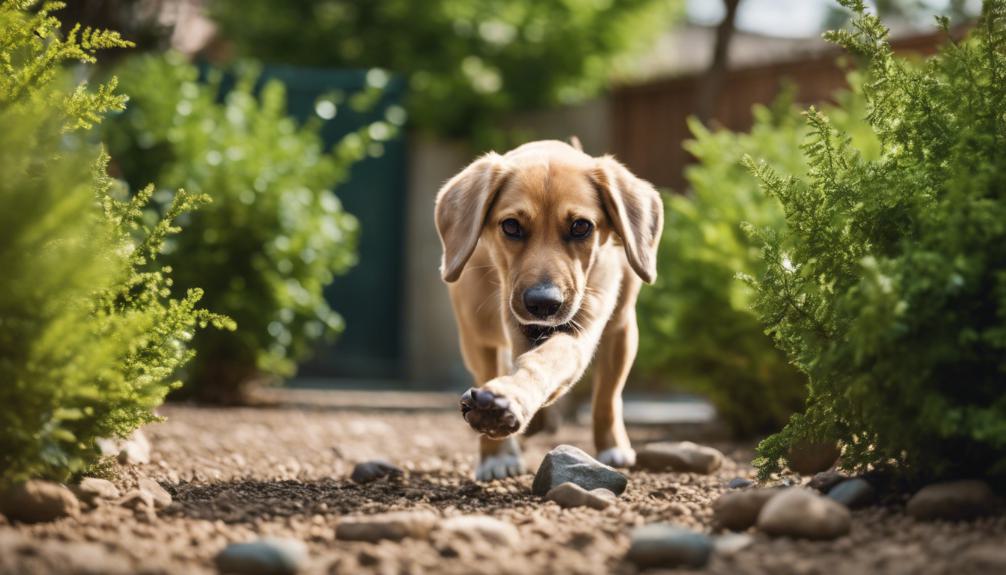How to Train Your Dog to Sniff and Find? Nose Work Tips
To train your dog to sniff and find effectively in nose work, start with suitable breeds like Beagles or German Shepherds. Use essential equipment such as scent sources and cotton swabs. Apply birch oil to cotton swabs and reward your dog for identifying scents. Engage in fun scent games and DIY activities like hide and seek. Strengthen the bond with your dog while enhancing their olfactory abilities through engaging challenges. Elevate your training with advanced techniques and classes offered by organizations like NACSW. Master the art of nose work for a rewarding experience with your furry companion. Uncover more tips for successful training.
Benefits of Nose Work Training
Engaging in nose work training with your dog offers a multitude of benefits that go beyond just physical exercise. This type of training taps into your dog’s incredible sense of smell, providing mental stimulation and enhancing the bond between you and your furry friend.
Through scent work, your dog’s cognitive abilities are put to the test, improving focus, concentration, and overall confidence. The AKC Scent Work program, for example, offers a structured approach to training that not only challenges your dog but also allows them to showcase their natural abilities.
As you explore the world of nose work training, you’ll discover a fun and rewarding activity that not only exercises your dog physically but also engages their mind in a way that few other activities can.
Suitable Dog Breeds for Nose Work
When considering suitable dog breeds for nose work, focus on breeds known for their strong sense of smell and natural scent detection abilities. Breeds like Beagles, Bloodhounds, and German Shepherds excel in scent work due to their heightened olfactory senses.
Working breeds such as Labradors, Border Collies, and Belgian Malinois are also well-suited for nose work, showcasing their abilities in tracking and detection tasks. Dogs known for hunting or tracking, like Coonhounds and Pointers, are naturals at detecting scents and finding hidden objects.
Additionally, herding breeds such as Australian Shepherds and Collies can thrive in nose work activities, thanks to their intelligence and focus. Remember, even mixed breeds or rescue dogs can participate and succeed in K9 Nose Work with proper training and encouragement.
Essential Equipment for Training

When preparing for nose work training, selecting the right equipment is essential. Make sure you follow safety precautions for gear, choose the appropriate scent sources like birch or anise oils, and adhere to proper use guidelines during your sessions.
These steps will help you set a solid foundation for successful nose work training with your furry companion.
Equipment Selection Tips
To effectively train your dog for nose work, make sure you have the essential equipment including scent sources like birch, anise, or clove oils, cotton swabs, disposable gloves, plastic sealable bags, and a scent tin and box. When engaging in scent training with your canine companion, these items are vital for a successful training session.
Utilize the cotton swabs to apply the chosen essential oil to various surfaces for your dog to sniff out. Remember to wear disposable gloves to avoid cross-contamination of scents during the training process. Store any unused scent training supplies in plastic sealable bags to maintain freshness.
Additionally, the scent tin and box provide a secure and controlled environment for your dog to focus on the scent during training sessions.
Safety Precautions for Gear
For best safety when handling essential training equipment, always utilize disposable gloves to prevent contamination. Store unused scent materials in plastic sealable bags to maintain freshness and avoid cross-contamination. Keep scented cotton swabs in a glass jar with a lid to preserve the scent and prevent evaporation. When transferring scented items, use a designated scent vessel to prevent mixing scents and confusion for your dog. After use, guarantee proper disposal of gloves to avoid contaminating scent materials. Following these safety precautions will help maintain the integrity of your training materials and ensure effective nose work sessions with your furry friend.
| Safety Precautions | Gear |
|---|---|
| Disposable gloves | Prevent contamination |
| Plastic sealable bags | Maintain freshness |
| Glass jar with a lid | Preserve scent |
Proper Use Guidelines
To ensure successful nose work training, proper utilization of essential equipment like birch essential oil, cotton swabs, tweezers, a glass jar with a lid, and a designated scent vessel is crucial. Ensuring you have the right tools and know how to use them correctly is key to training your dog in scent work. Here are some guidelines for the proper use of this essential equipment:
- Apply birch essential oil to cotton swabs for scent training.
- Use tweezers to transfer scented cotton swabs to the designated scent vessel.
- Reward your dog for identifying the source odor.
- Introduce the scent by feeding your dog at the source of the odor.
- Test your dog’s ability to find the scent in different locations.
Nose Work Classes Availability

Classes for nose work training can easily be found through the National Association of Canine Scent Work (NACSW) website. On the NACSW platform, you can locate workshops and certified instructors offering structured training sessions for nose work classes.
If you prefer personalized attention, one-on-one classes are also available to cater to your specific needs. These classes are designed not only for dogs keen to learn the sport of scent work but also for reactive dogs in a controlled environment.
K9 Nose Work Competitions
K9 Nose Work competitions, organized by the National Association of Canine Scent Work (NACSW), offer a thrilling platform for trained dogs to showcase their scent detection skills.
Competitors must pass an odor recognition test to participate in sanctioned trials.
Dogs are tested on their ability to find specific odors in various environments.
Handlers must follow strict guidelines set by the organization during competitions.
These competitions provide a platform for trained dogs to showcase their scent detection skills.
Starting Your Dog in Nose Work

When starting your dog in nose work, introduce them to fun and mentally stimulating scent games using food rewards to encourage sniffing.
You can make a simple DIY game by placing treats in muffin tin holes and covering them with tennis balls for your dog to find.
Another great way to start teaching your dog is by using a cotton swab to apply a scent to a container with holes drilled in it, allowing your dog to use their sense of smell to locate the hidden treats.
These activities engage your dog’s natural instincts and strengthen their ability to search for scents.
Scent Training Supplies
For effective scent training, gather essential supplies such as birch, anise, or clove oils as scent sources. To guarantee successful training sessions, make sure you have the following items on hand:
- Cotton swabs: Used to carry the fragrant oil for training purposes.
- Disposable gloves: Essential for preventing contamination of the scent.
- Plastic sealable bags: Useful for storing unused scent training supplies.
- Scent tins and boxes: Necessary for holding and training with the specific scent.
Having these supplies readily available will help you conduct efficient and productive scent training sessions with your dog.
Engaging Scent Training Games

Engaging scent training games like the Scent Discrimination Game and Hide and Seek Scent are excellent ways to challenge your dog’s olfactory skills.
These games not only provide mental stimulation but also strengthen the bond between you and your furry friend.
Get ready to watch your pup have a blast while honing their natural sniffing abilities!
Scent Discrimination Game
To enhance your dog’s olfactory abilities, try introducing them to the Scent Discrimination Game, where they learn to identify and differentiate between various scents. This engaging game, recommended by the National Association of Canine Scent Work, can become your dog’s favorite pastime.
Here are some tips to get you started:
- Hide the Scent: Place different scents in containers, allowing your dog to sniff and find the one with a treat inside.
- Make a DIY: Create your scent containers using household items like jars or boxes to customize the game for your dog.
- Reward System: Associate each scent with a reward or treat to reinforce scent discrimination skills.
- Challenge Levels: Increase difficulty by using similar scents, encouraging your dog to refine their olfactory abilities.
- Bond Strengthening: Enjoy the interactive training that fosters mental stimulation and strengthens the bond between you and your furry friend.
Hide and Seek Scent
Enhance your dog’s sense of smell and mental stimulation with hide and seek scent games. These interactive fun activities not only provide entertainment but also help in sharpening your furry friend’s olfactory senses. One engaging game to try is the muffin tin game, where you hide treats under tennis balls in a muffin tin for your dog to find. This encourages sniffing and searching, giving them a mental workout. Incorporate various nose work games at home to stimulate your dog’s brain and keep them engaged. Use everyday objects creatively to design scent training activities that challenge and entertain your dog. Make learning fun for your canine companion with these entertaining scent-based games.
| Scent Training Activities | Benefits |
|---|---|
| Hide and Seek Scent | Enhances sense of smell and mental stimulation |
| Muffin Tin Game | Encourages sniffing and searching abilities |
| Nose Work Games | Stimulates your dog’s brain for a mental workout |
Advanced Techniques in Nose Work
Exploring advanced techniques in nose work can greatly enhance your dog’s detection skills and overall performance. To take your training to the next level, consider the following strategies:
- Comprehension: Use shaping techniques to gradually mold your dog’s behavior towards the desired outcome.
- Clever disobedience: Teach your dog when to disobey a command for safety reasons, such as not alerting when the source of the scent is dangerous.
- Focused attention: Train your dog to stay focused on the task at hand, improving their ability to detect specific odors.
- Alerts in K9 scent work: Learn to interpret your dog’s alerts accurately, distinguishing between passive and active alerts.
- K9 scent work tags: Utilize resources like AKC Scent Work to deepen your comprehension and skills in nose work training.
Frequently Asked Questions
How Do You Train a Dog for Nose Work?
To train your dog for nose work, introduce a specific scent like birch essential oil. Use positive reinforcement with treats. Gradually increase difficulty by hiding the scent in various locations. Feed your dog at the odor source to encourage focus.
How Do I Teach My Dog to Sniff and Find?
Introduce your dog to a specific scent, like birch essential oil, using positive reinforcement. Associate the scent with a reward. Hide it in various locations, guide them with verbal cues, and reward successful identification. Consistent practice builds confidence.
How Do You Teach a Dog to Do the Nose Trick?
To teach your dog the nose trick, start with a specific scent and rewards. Guide them with verbal cues to find it in various locations. Increase difficulty gradually. Reward successful searches with treats to encourage their natural sniffing behavior.
What Scents to Use for Dog Scent Training?
To train your dog for scent work, use birch, anise, and clove essential oils. These scents create target odors for them to find. Birch is a good beginner scent. Consistency with the same scent helps them associate it with the desired behavior.
Conclusion
To sum up, training your dog in nose work can provide numerous benefits and strengthen the bond between you and your furry friend.
With the right equipment, classes, and competitions available, you can help your dog develop their natural sniffing abilities and have fun in the process.
By starting with basic scent training and gradually advancing to more challenging techniques, you can engage your dog in a rewarding and stimulating activity that taps into their instinctual talents.
Happy sniffing!

